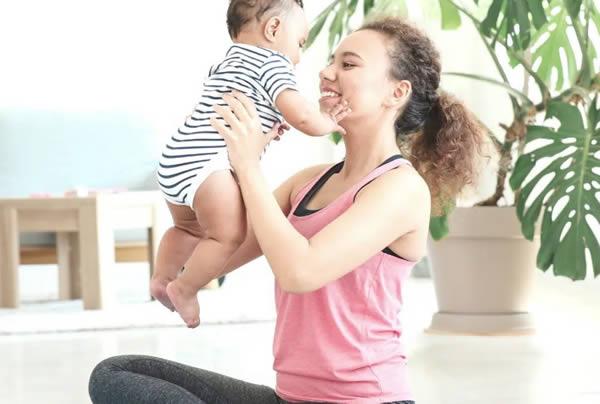
How Postpartum Exercise Guidelines are Changing and Why
We’re not saying “Don’t exercise at all!”
In the article Sydni describes the evolution of standard practice for exercising postpartum – with recommendations increasing from six weeks to twelve weeks before any strenuous activity – but with added emphasis on easing into exercise at the six week mark, all the while building to a full regimen at the twelve week mark.
She begins:
Many women can’t wait to start exercising again after pregnancy. For others, sweet baby snuggles tend to win out over exercising for the first few weeks. Once you catch up on sleep and start to gain more energy, you may be ready to do Pilates or go for a jog again—but it might not be safe to jump back in with the same intensity level in your postpartum exercise as in your pre-pregnancy routines.
…It turns out, new research backs waiting until 12 weeks postpartum to do high-intensity workouts, and many OBGYNs have adjusted their postpartum exercise recommendations acccordingly.
On easing back into exercise before 12 weeks
LIke I said, it’s not that you can’t exercise at all. Many women can safely begin light exercise shortly after giving birth and for the first 4 to 6 weeks postpartum, but it depends on several factors including whether you gave birth vaginally or via cesarean section.
Women who’ve had a healthy pregnancy and a normal vaginal delivery should be able to start doing light exercises a few days after giving birth—or when you feel ready—according to the American College of Obstetricians and Gynecologists (ACOG) and March of Dimes. The organizations both recommend asking your OBGYN before you start exercising, especially if you had a cesarean birth or complications.
When you do start working out, ACOG suggests easing back into it. Aim to stay active for 20 to 30 minutes a day, starting with simple exercises that strengthen abdominal and back muscles, then slowly adding in moderate-intensity exercises and working your way up to higher-intensity workouts.
You can start with core exercises that incorporate your pelvic floor, and gradually increase impact. Start with walking before you jog, and jog before you run. Stop whatever you’re doing and see a pelvic health physical therapist if you experience any leakage, signs of prolapse (pelvic heaviness or pressure), back or joint pain.
Working out is important for your postpartum recovery, and can:
- Help strengthen abdominal muscles
- Boost energy
- Help prevent postpartum depression
- Promote better sleep
- Relieve stress
- Help you lose extra weight you may have gained during pregnancy
- Additionally, pelvic floor strength is important in new moms.
Having suitable midline and pelvic floor support is essential for daily functional activities, including many of the new ones involving your little bundle of joy. There are lots more great tips on these new postpartum exercise guidelines in the full article at the Motherly website.
Whether you’ve recently given birth or have a new child on the way, feel free to schedule an appointment with one of our licensed physical therapists during this special time in your life.
